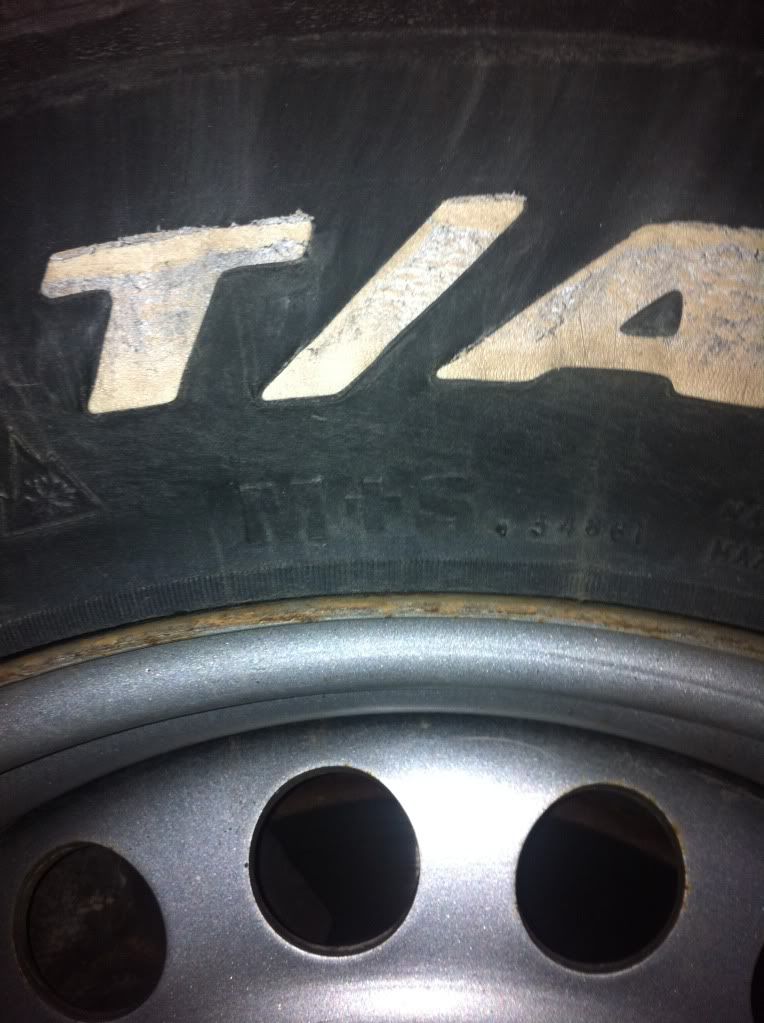jebiga41 wrote:Also interestingly BFG MT's have an M+S marking, just below the n of terrain, but no snowflake in the mountain symbol as they don't have sipes rating them for deep snow but not packed snow or ice
http://www.tirerack.com/tires/BigPic.js ... n+T%2FA+KM" onclick="window.open(this.href);return false;
Just to confuse the issue completely .....
"In the United States and Canada, a "snowflake on a mountain" symbol means that the tire has exceeded the industry requirement for a reference (non-snow) tire". This is a different definition to the European one
From
http://www.snowtyres.com" onclick="window.open(this.href);return false;
High speed rated, high performance summer tyres
If your tyres are marked with a V, ZR, W or Y speed rating they are high performance “summer” road tyres and were never designed for driving on snow covered roads. High speed rated summer tyres, by definition are not winter/snow tyres. All high performance AWD summer tyres become like hard plastic when the temperature falls below 7° thereby losing the flexibility needed to build up sufficient grip for braking, for starting traction and for cornering.
Today’s tyre tread designs and compounds maximize long, even wear… not winter traction.
All season tyres
Then when radial ply tyres were also found to deliver more snow traction than the straight rib bias ply tyres, the tyre company marketing departments saw an opportunity, and the term “all-season tyre” was born. Supported by advertising, all-season tyres have presented an unspoken promise that they, throughout their life, can provide traction for all-seasons…through spring’s rain, summer’s heat, autumn’s cooling and winter’s snow. And while this combined offering made all-season tyres popular, the problem is that this geometric definition doesn’t guarantee performance or any degree of safety in winter driving.
Off-road and all-terrain AWD tyres
Off-road and all-terrain AWD tyres are not specifically designed for winter/snow driving either. These types of AWD tyres are designed for off-road driving on gravel, sand and rocks and have a very high noise level. Under cool conditions—not just cold or freezing conditions—the rubber in these tyres gets even harder.
This stiffer tread compound does not conform to irregular road texture as well, and as a result has less actual contact with the road surface.
Because off-road tyres have very limited siping on their tread they provide little traction in icy conditions. Only severe service winter tire has the compound to remain soft and pliable at lower temperatures.
M+S marking on tyres is very misleading.
Many AWD tyres are rated M+S, M&S or M/S, i.e., mud and snow. Established by the USA Rubber Manufacturers Association (RMA), the M+S designation refers only to the tread pattern. The M+S standard calls for a tyre with grooves at the outside of the tread that extend into the centre. It also means that 25% of the tyre tread contact surface be open, i.e., a more open tread pattern.
You will find the M+S symbol on most all-season tyres, on off-road and all-terrain tyres and even some high performance summer tyres may have this designation. However, there are no performance standards to meet or traction tests to pass.
Any tyre with grooves at angles and with 25% of the tread void can be labelled as M+S.
And on icy snow and on ice, the open tread grooves have zero effect on performance. Control of the vehicle comes strictly from equal parts of the tyre rubber compound that provides adhesion and the effects from the tread sipes.
In 1999, the RMA defined a real “snow” or winter tyre with its severe snow-rating. Car and AWD tyres that pass this performance test and are embossed with the “snowflake on a mountain peak” icon. Severe snow-rated tyres must provide traction at least 10% better than a standard reference test tyre.
The off-road, all-terrain and all-season M+S tyres cannot pass this test. The M+S rating doesn’t mean much.
No words will be eaten!






 the all important snowflake in the mountain
the all important snowflake in the mountain 

